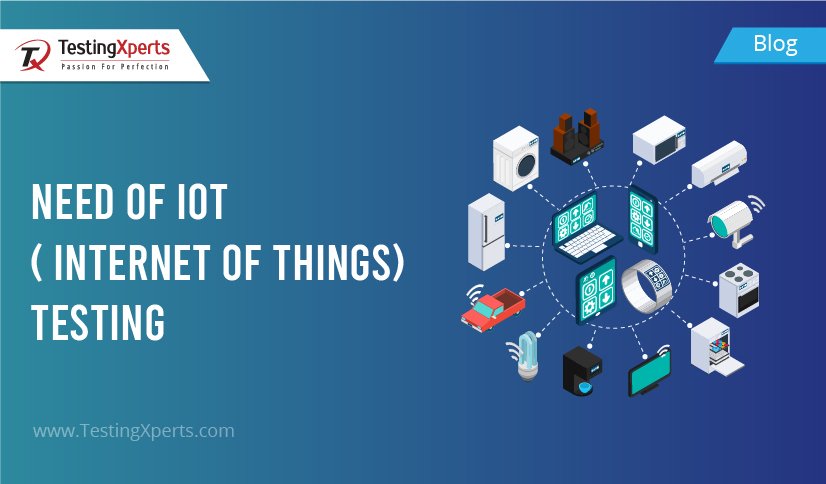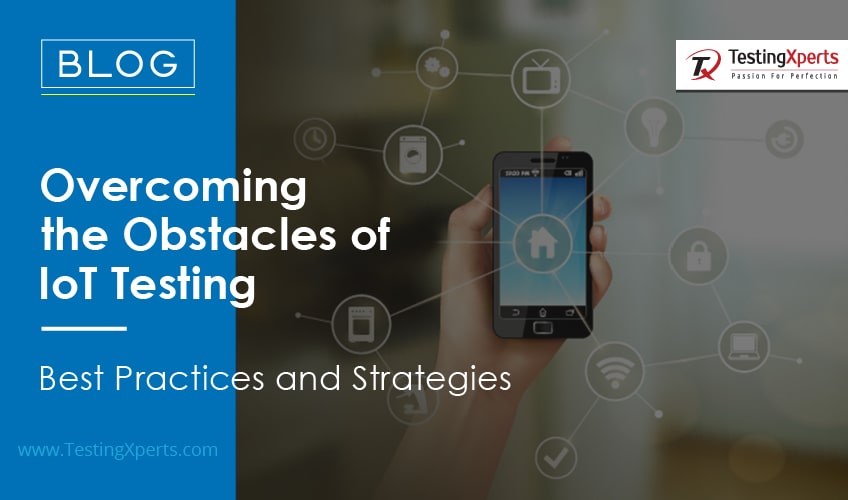Internet of Things (IoT) is taking over the world both in the idea as well as practice by transforming the way industries are working together. IoT has initiated the quicker advancement of ideas that affect our everyday activities. It has also helped in accelerating the technical world’s proficiency to make digital ecosystems of the future an existing reality.
Contents
1. IoT Testing
2. Unique features and requirements of IoT Systems
3. Challenges Impeding IoT Testing
4. 5 Major Types of IoT Testing
5. TestingXperts’ IoT Testing Solution
IoT Testing Overview
It has become a reality that the world is ready to consider and leverage for better results. Its acceptance can be accredited to many of its core features such as:
• Increase of various protocols
• Proficient Machine to Machine communication
• Overall smart working and living
• Unification of several embedded devices
Unique features and requirements of IoT systems
Compared to other applications, IoT applications are categorized by several unique factors, such as:
• Combination of sensors, gateways, hardware, connectors, and application software in a single system
• Real-time stream analytics and intricate event processing
• Support for data velocity, volume, variety, and veracity
• Conception of large-scale data
Challenges Impeding IoT Testing
The above-mentioned features present a unique set of challenges when it comes to testing the IoT applications. The main challenges include:
• Security and data privacy: Impending security vulnerabilities across various layers of IoT system
• Real-time complexities: IoT applications can have various, real-time scenarios and its use cases are complex
• Dynamic environment: With millions of sensors and devices in combination with intelligent software, IoT has a dynamic environment, unlike application testing that is performed in a defined environment.
• Expertise to automate: Due to numerous scenarios and dependency on sensors and devices, automation has become a challenging process
• Scalability of the system: Building a test environment to measure functionality along with scalability and consistency is challenging
5 Major Types of IoT Testing
With the advancement in technology, a whole new level of complexity has been introduced for testing IoT devices. To abridge the complexities involved in IoT testing process, testers can allude to these 5 IoT testing types:
1. Security Testing
Security testing includes the testing of information security, confidentiality, and reliability of the system for continuous quality in the IoT environment. Security testing also ensures that the steps being taken to keep up the safety and privacy are accurate as there is delicate information stored in the connected devices. Hence, addressing the impending security challenges.
2. Performance Testing
The main objective of this type of testing is to standardize the association with the object and the software with which it interacts. Performance testing validates the hardware and software components of a device with several test cases. It ensures that an application can handle the projected increase in user traffic, data volume, transaction counts frequency, etc. hence, addressing the scalability issues.
3. Compatibility Testing
It is a scope of how various devices interact with the digital environment. There are several validation considerations such as hardware compatibility, encryption checks & security standards from the device layer to the network layer that are executed in this type of testing. Hence, addressing the compatibility issues that arise with the connected devices.
4. User-Experience Testing
User experience testing defines how a particular application or system works across various interfaces and channels. Based on data gathered from various use cases, a tester can ensure the user-experience, front-end, and back-end functionalities. This will ensure delightful user experience and address the challenges that arise due to usability issues.
5. Exploratory Testing
The accomplishment of any application is determined by its users; this is true for every IoT application that meets all requirements. Therefore, it’s essential to perform exploratory testing to ensure how the application works while interacting with real-time users and address the real-time complexities.
TestingXperts’ IoT Testing Solution
TestingXperts follows a comprehensive QA strategy to handle the unique requirements and challenges associated with the IoT applications. Our intelligent Test Automation Framework ‘Tx-Automate’ provides the capabilities required to perform extreme automation. It can effortlessly integrate with various IoT protocols and platforms, hence providing interoperability. Connect with us to leverage our robust processes, methodologies, and guidelines for web / mobile applications, software products, cloud, and networks.
Discover more
Get in Touch
Stay Updated
Subscribe for more info





